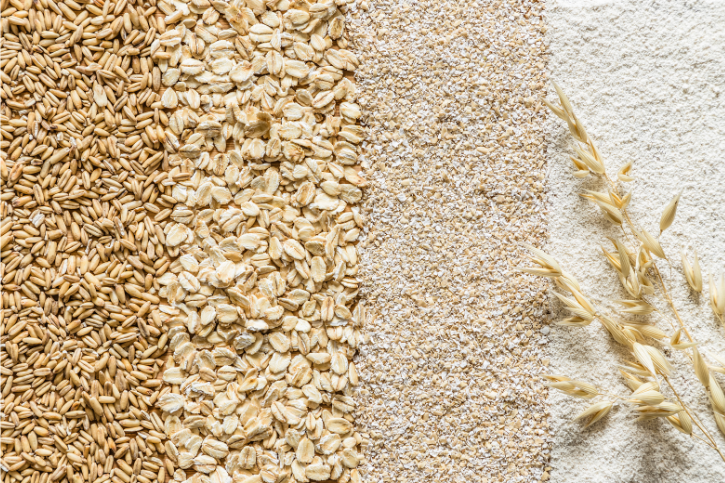
October 18, 2022 2 min read
The difference between oat fiber, oat flour, and oat bran is what part of the oat is used to make it.
Oat fiber is made by grinding just the hulls of the oats. Oat hulls are the hard shells that are usually removed while the oats are being processed. Oat hulls are what you see growing in an oat field, light brown kernels on the stem. Oat fiber is mainly a source of dietary fiber, but also contains protein and minerals like magnesium and iron. Oat fiber is much softer than oat flour, it feels more like a light powder than a flour. Oat fiber can be added to soup to help thicken the consistency, as well as smoothies or baked goods for added fiber and nutrients. It is great for your heart and promotes healthy digestion. Think of it as a natural supplement!

Oat flour is made simply by grinding the hulled oats into a flour, and is an excellent choice for those on gluten-free diets. Oat flour contains all the nutrients that oats bring, only it can be used in so many more ways than regular oats! There are countless recipes to include oat flour in, you can use it to replace all-purpose flour in most recipes. It is ultimately the healthier option between the two flours and is incredibly easy to make at home. All you need is your Oats and a grinder!
Oat bran is made from the outer layer of the oat groat, but is not the same as oat fiber. Oat bran is a source of protein and contains more nutrients than oat fiber. Because oat fiber is made from the hull, its main nutrient is fiber. Oat bran, on the other hand, is made from what is under the hull and covering the oat. It looks very different from oat fiber and oat flour, so it is hard to get them confused in that right. Oat bran contains even more protein than rolled oats, making it a great ingredient to use to make breakfast with. Oat bran can be made into hot cereal, porridge, or even baked into muffins!
These three products are similar but also distinct! Don't get oat fiber, flour, and bran confused as the same thing!
❤ Try our USDA certified Oat Products ❤
Thanks for reading this Be Still Farms Blog article. To sign up for more news/articles and/or recipes, click here. For more about us, click here. To shop our certified organic products, click here.
Please comment and share and we look forward to serving you in the future!
Comments will be approved before showing up.

January 27, 2025 3 min read
Flaxseed, the tiny yet powerful superfood, is packed with nutrients that can support weight loss. From curbing hunger to stabilizing blood sugar, this guide dives into the science of how flaxseed can help you shed those extra pounds.

December 11, 2024 3 min read
Discover three quick and easy soup recipes featuring organic small red beans. From a classic vegetable soup to a creamy potato blend, these wholesome recipes are perfect for chilly days and busy weeknights. Packed with flavor and nutrition, these soups will warm your heart and soul this winter!

December 06, 2024 3 min read
This vibrant and nutritious Green Lentil Salad combines tender lentils with grilled chicken, fresh vegetables, and a zesty lemon dressing. Packed with protein, fiber, and essential vitamins, it’s the perfect healthy meal for any time of day.
© 2025 Be Still Farms- Real, Fine Organics.
Privacy | Terms | Refund Policy | Organic Certification
